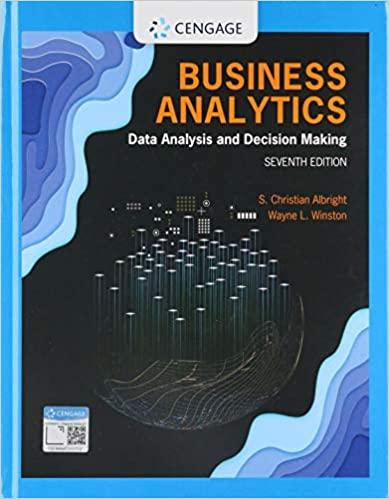This problem (originally created by Palisade) is a test of a neural nets ability to learn. The
Question:
This problem (originally created by Palisade) is a test of a neural net’s ability to learn. The file P17_24.xlsx contains data on three numbers, two operations, and two results. The first two numbers are combined with Operation1 (add or subtract) to produce Result1. That is, Result1 is either Number1 + Number2 or Number1 - Number2. Then the third number and Result1 are combined with Operation2 (add, subtract, or multiply) to produce Result2. That is, Result2 is either Result1 + Number3, Result1 - Number3, or Result1 * Number3.
The question is whether a neural net, with a numeric dependent variable, can discover the pattern and accurately predict Result2. Note that the value of Result2 is missing for the first three observations. You can figure out these three values, but can a neural net?
a. Use NeuralTools to perform the prediction, using columns A–F as predictors. Specifically, accept all the defaults in the Training dialog box, but check the Place Predicted Values Directly in Data Set option. (At the end of the run, you can respond No to the sensitivity analysis.) In this case, NeuralTools performs linear regression, as in Chapters 10 and 11, with dummies for the Operation variables, and it compares this with a neural net. Now “bad” predictions are defined as those off by at least 30%, and RMSE is a measure of overall accuracy. Comment on how well the neural net predicts and how it compares to linear regression. How accurate are its predictions of the three missing values?
b. There are currently only 1000 observations. Create a new file with these 1000 observations plus 9000 more tacked on to the bottom and repeat part a on this larger data set. The question is whether a neural net trained on more data is more accurate. (For the new data, generate uniformly distributed random numbers in columns A–C, generate “add” or “ subtract” in column D with probability 0.5 each, generate “add” or “subtract” or “multiply” in column E with probability 1/3 each, and calculate columns F and G accordingly. Then copy all the new data and paste it over itself as values before using NeuralTools.)
Step by Step Answer:

Business Analytics Data Analysis And Decision Making
ISBN: 9780357109953
7th Edition
Authors: S. Christian Albright, Wayne L. Winston





